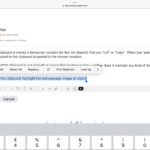Getting a tax refund can be an eagerly awaited financial event for many. If you’re expecting money back from the IRS, understanding how refunds work and how to track your refund status is crucial. This guide provides a step-by-step overview to help you navigate the process of receiving your federal tax refund efficiently.
Understanding Tax Refunds
A tax refund is issued when you’ve paid more in taxes throughout the year than you actually owe. This can occur through payroll withholdings, estimated tax payments, or claiming refundable tax credits. Even if you didn’t pay income tax, you might still be eligible for a refund if you qualify for certain refundable tax credits. To receive your refund, it’s essential to file a tax return with the IRS. Remember, you generally have up to three years from the original tax return deadline to claim a refund.
Checking Your Federal Refund Status Online
For those who choose to e-file their tax returns, the IRS provides an online tool called “Where’s My Refund?” to track your refund status. Typically, you can start checking the status approximately 48 hours after the IRS acknowledges receipt of your e-filed return. This tool provides information for your current year’s refund and potentially refunds from the past two years.
Tracking Amended Returns
If you filed an amended tax return (Form 1040-X), the processing timeline differs. It generally takes up to three weeks for amended returns to appear in the IRS system and can take as long as 16 weeks for complete processing. To monitor the status of your amended return, the IRS offers a separate tool called “Where’s My Amended Return?”.
Expected Refund Timelines
The IRS aims to process refunds as quickly as possible, but processing times can vary. Here are typical timelines:
- E-filed returns: Generally within 21 days.
- Amended returns and mailed returns: Around 4 weeks or longer.
- Returns requiring further review: Processing may take longer if your return requires corrections or additional review.
Keep in mind that these are typical timeframes and the exact timing can depend on various factors.
Choosing How to Receive Your Refund
The IRS offers several convenient ways to receive your federal tax refund:
-
Direct Deposit: This is the fastest and most secure method. You can have your refund directly deposited into your bank account (checking, savings, or retirement). The IRS also allows you to split your refund into up to three different accounts.
-
Paper Check: If you prefer, the IRS can mail a paper check to the address provided on your tax return. Ensure your address is current to avoid delays.
-
Prepaid Debit Card: Some banks or card providers allow tax refunds to be deposited onto prepaid debit cards. Check with your provider for compatibility and necessary account details.
-
Mobile Payment Apps: Certain mobile payment apps may accept direct deposits of your tax refund.
-
Traditional, Roth, or SEP-IRA: You can even choose to deposit your refund directly into an existing IRA account.
Addressing Refund Issues
Occasionally, issues may arise with your tax refund. Here are some common scenarios and how to address them:
-
Unexpected Refund Amount: If your refund is different from what you anticipated, it could be due to adjustments made by the IRS. Review any notices from the IRS for explanations.
-
Missing or Destroyed Refund Check: If your paper refund check is lost, stolen, or destroyed, you can request a replacement check from the IRS.
-
Incorrect Bank Account Information: If you entered incorrect bank account or routing numbers on your return, immediately call the IRS at 800-829-1040 to attempt to stop the direct deposit. If the deposit has already been made to the wrong account, you’ll need to contact your bank to try to recover the funds.
-
Paper Check Instead of Direct Deposit: This might occur if the bank account isn’t in your name, your spouse’s name, or a joint account, if your bank rejected the deposit, or if you’ve requested more than three electronic refunds to a single account.
-
Refund Received in Error: If you receive a refund you were not entitled to, it’s important to promptly return it to the IRS to avoid potential penalties.
Getting Phone Assistance
While “Where’s My Refund?” provides the most up-to-date information, phone assistance is also available. For automated refund information, you can call the IRS refund hotline at 800-829-1954 for current-year refunds or 866-464-2050 for amended returns.
If you believe there’s an error with your refund, check “Where’s My Refund?” or your IRS online account for detailed information.

